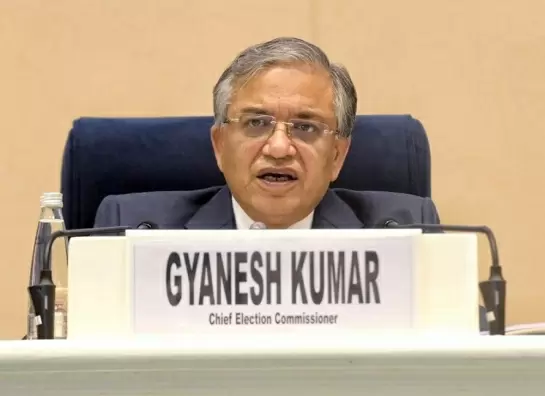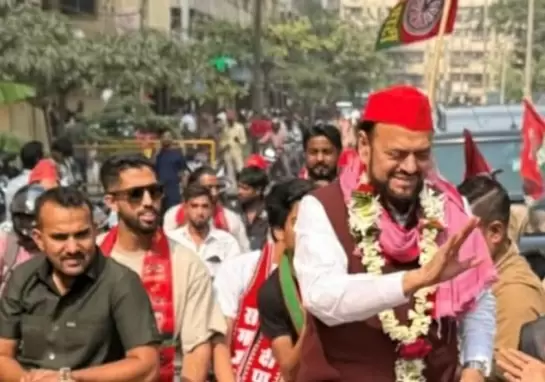Street protests new kind of politics, says experts
04-January-2013
Urban street protests, which shook the government and brought issues like corruption and crimes against women to the centre stage of public consciousness, represent a new kind of politics driven by an assertive middle class and 24x7 TV news but have many a flip side, experts feel.
"It is a new kind of politics. It is a reaction to the misdemeanors of politicians and mis-governance. The middle class which dominated these protests has become assertive," Zoya Hasan, who teaches political science at the Jawaharlal Nehru University, told IANS of the mass upsurge following the gang-rape of a 23-year-old woman and her subsequent death.
While there have been limited editions of such protests - for instance after the razing of Ayodhya's Babri mosque and the killing of ramp model Jessica Lal in the national capital - the kind now being witnessed started in 2011 with social activist Anna Hazare demanding a strong law to curb corruption. It resurfaced in December 2012 to demand justice for the gang-rape victim and stringent steps to ensure women were better protected.
But the urban street protests have a flip side and could turn dangerous too, Hasan said.
"It has delineated itself from organised politics. It has no agenda. It is leaderless, chaotic and lacks vision," she cautioned.
"The danger is that it could lead to authoritarian solutions like the protesters demanding the death sentence for rapists," Hasan said.
The angry protests against the gang rape, involving many young women at Raisina Hill, India Gate and later at Jantar Mantar in the political heart of the Indian capital, shook the government out of its slumber and forced it to take quick steps to address the systemic gaps.
The protests have jolted the collective conscience of the country. Also, the mass outpouring of grief and outrage made young and old, men and women come out on the streets to demand justice for the victim and stronger anti-rape laws.
Jantar Mantar, the 18th century observatory that is a tourist landmark, has become the popular protest site, where people, mostly youngsters, continue their vigil even in the biting winter chill, demanding better laws to make women of this country feel secure.
What is also noticeable is that the current protest is not led by any political party, leader or individual - which was a norm during the Hazare campaign. It was spontaneous and coordinated and mobilised largely via social media.
Activist Ranjana Kumari, who highlights women's issues, believes the current protests are taking democracy to a new level and mark a new phase redefining the role of the people in it.
"These protests are taking democracy to a new level and are a new phase redefining the role of the people in it," Ranjana Kumari, the director for Centre for Social Research, told IANS.
She said the urban street protests need to be guided by more carefully planned thought and ideology.
"An absence of this can be hijacked by people who have no concern for it," she said, adding: "It has to be a long-term sustained effort."
Activist Arvind Gaur, who was part of the protests at Jantar Mantar, termed the protests a "new kind of socio-political awareness among youth" and said they will "strengthen democracy".
"Youth have shown they are aware of social issues. They did not allow any political party to hijack the movement," said Gaur, a well-known theatre director.
Claiming that "every political party wanted to lead the movement," he said: "Youth must be careful that the movement does not become misguided."
Activist Swami Agnivesh said the protests happened as the political parties were falling short of the people's expectations.
"It was a spontaneous crowd and not an organised protest," Agnivesh, who was part of the Anna Hazare movement during the initial days, told IANS of the Jantar Mantar protest.
He said lack of leadership and a clear ideological background were both the strength and weakness of the movement. - IANS
Tamil Nadu Revenue, Anganwadi Teams To Boycott Voter List Revision Work
Swiggy Under Fire After Vegetarian Customer Receives Non-Veg Order
Bengaluru Woman Techie Loses Rs 31.83 Crore In Six-Month ‘Digital Arrest’ Scam
EAM Jaishankar Calls For Full Support As Indian Pilgrims Killed In Saudi Bus Crash
Bihar Trends: Karnataka BJP Says Rahul Gandhi Nearing “Century Of Defeats”









